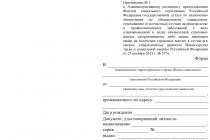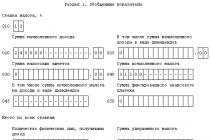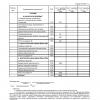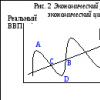You can get acquainted with the peculiarities of calculating VAT in certain situations on our forum. For example, you can find out if the tax base according to VAT, transport costs when importing goods from Belarus.
At what rate to calculate the Belarusian VAT
When importing goods from Belarus, the Russian importer is obliged to pay import VAT, regardless of the country in which they were produced (this is evidenced by the letter of the Ministry of Finance of the Russian Federation dated 08.09.2010 No. 03-07-08 / 260). There are no exceptions for anyone: in this case, taxpayers pay VAT regardless of the chosen taxation system.
However, there is a list of goods exempt from import VAT. First of all, these are the lists given in Art. 150 of the Tax Code of the Russian Federation and Decree of the Government of the Russian Federation dated April 30, 2009 No. 372 issued in accordance with it. The exemption under Art. 149 of the Tax Code of the Russian Federation.
For goods not exempt from tax, the usual rates for import from Belarus are 20% or 10%, depending on the type of goods. A reduced 10% rate is provided for goods included in special lists established by the Government of the Russian Federation. In particular, for foodstuffs and children's products, such lists were approved by Decree of the Government of the Russian Federation of December 31, 2004 No. 908. Imported products for which no benefits have been established are taxed at a rate of 20%.
NOTE! For shipments transition period(2018-2019), you need to choose the VAT rate, focusing not on the date of shipment of goods by a foreign seller, but on the date of their registration by a Russian buyer. If the goods were shipped in 2018 and registered in 2019, the rate will be 20%.
When VAT on imports from Belarus to Russia should be transferred to the budget
VAT must be paid before the 20th day of the month following the one in which the imported goods were registered.
BCC for payment: 182 1 04 01000 01 1000 110.
The tax should be paid to your IFTS.
If the company has an overpayment for federal taxes, import VAT they may not list at all. However, in this case, the inspectors must submit an appropriate application with a request for offsetting the overpayment.
It should be borne in mind that according to paragraph 4 of Art. 78 of the Tax Code of the Russian Federation, the tax authorities are given 10 working days from the date of filing such an application to make a decision on the offset. And if the organization sends it without taking into account the fact that payment must be made by a certain day, it is quite likely that the inspection will carry out a set-off when the VAT payment deadline has already passed, and then penalties will be charged.
Import from Belarus to Russia: what is submitted to the tax
For imported goods and materials, fill in special declaration on indirect taxes. In addition, the tax authorities should send a number of papers confirming the fact of import and payment of VAT to the budget.
The declaration is filled out for the month in which the imported goods and materials were recorded. Moreover, if there was no fact of import, there is no need to compile it.
This declaration is sent to the inspection no later than the 20th day of the month following the one in which the assets were recorded. If the company had 100 or less employees last year, the declaration can be submitted in paper form. It should be remembered that the required electronic form provided only for regular (quarterly) VAT returns. The tax authorities themselves speak about this (letter of the Federal Tax Service of the Russian Federation for Moscow dated March 11, 2014 No. 16-15 / 021948).
Importing companies fill out section 1 of the application, entering data on the supplier and buyer, information on the contract and the cost of imported goods and materials. Section 2 of the application is filled in by the inspectors themselves (here they put down their mark on the payment of VAT). In some situations, such as mediation, the importer needs to complete a third section as well.
You can download the application form from our website:
The inspectors consider the application within 10 working days and confirm the payment of VAT:
- A mark on a paper application. At the same time, one of the copies of the application remains with the controllers, and the rest are returned to the importing company. Of these, one document is intended for the company itself, and 2 others must be transferred to the Belarusian supplier so that he can confirm the zero export rate on his territory.
- A separate electronic document when sending an electronic application. In this case, the buyer must transfer to the seller in electronic or paper form copies of his application and the supporting document received from the Federal Tax Service.
However, there are cases when VAT paid on the import of goods from the EAEU must be included in their value. Check out such cases in the Ready solution from ConsultantPlus.
How to deal with deadlines
In practice, situations are not uncommon when VAT on imports from Belarus is paid in one quarter, and the importer receives a tax mark on the application in the next. According to officials, in this case, VAT is deductible only after the appropriate mark is made (letter of the Ministry of Finance of the Russian Federation dated 02.07.2015 No. 03-07-13/1/38180).
However, judges in such situations often take the side of taxpayers declaring a deduction in the period of actual payment of VAT to the budget, without waiting for the mark of controllers (Resolution of the Federal Antimonopoly Service of the Moscow District dated July 25, 2011 No. КА-А41 / 7408-11). However, if you don’t want to argue with the tax, then it’s better to wait for the mark.
Results
Goods imported from the EAEU countries (including from Belarus) are subject to VAT at the normal rates (20 and 10%), unless they are exempt from tax. The payment of such a tax is obligatory for all importers, regardless of the taxation regime they apply. The deadline for payment and reporting of tax charged on imports from the EAEU expires on the 20th day of the month following the reporting month.
Reporting is presented by a declaration on indirect taxes and an application for import, accompanied by copies of documents confirming the import and payment of tax. For the month in which there are no import operations, reporting is not submitted. The tax paid, subject to the acceptance of the IFTS documents on importation, is deductible.
See also our articles:
- "VAT on import from Kazakhstan to Russia";
- "VAT on import of goods from Kyrgyzstan to Russia";
1. Payment "cash on delivery".
Payment is made in post office upon receipt of the order.
2. Payment to the current account (bank transfer)
Buyers from Russia and Belarus can pay for the order to the bank account of the online store.
- Select the payment method - payment for the order using the "Settlement" system (AIS ERIP), click - order.
- Next, you need to remember or write down your order number and cost.
Only after that, use Internet banking, an ATM or go to the cash desk of any bank.
ERIP - payment using Internet banking and payment and reference terminals and ATMs:
- Go to the Bank's website (Internet banking) or find the nearest payment terminal (infokiosk) or ATM.
- Select the "Settlement" system (ERIP) item in the list of services.
- Select "Online stores / services", then the letter "A", and then "website".
- Enter the account number.
- Confirm payment.
ERIP - through the cash desks of banks:
You go to the cash desk of any bank (participant of the "Settlement" (ERIP) system) and inform that you need to pay for the "website" service through the "Settlement" system (the service is located in the "Online stores / services" catalog, letter "A"), provide your account number and pay in cash or by bank card.
3. Payment to Alfa Bank's bank card
Buyers from Russia can pay for the order in Russian rubles to Alfa Bank's bank card.
- Choose products in the online store and create a shopping cart. Go to the shopping cart.
- Select the payment method - payment via the WEBPAY system ( VISA card or MasterCard)
- After pressing the button, you go through a secure Internet connection to the payment page hosted on the WEBPAY payment server. At the same time, the code of the online store, the number and amount of the order are transmitted to the payment server.
- The buyer enters the parameters of his bank card- card type, number, name on the card, expiration date, CVV2/CVC2 code, etc., into a special form and press the "Pay" button (card data is transmitted via a secure protocol directly to the system of the issuing bank for cardholder authentication).
- After completing the payment procedure, you automatically go to the website of our online store, and we complete and ship your order.
CVV2/CVC2 is the control number of a bank card, consisting of three digits and printed on its reverse side. This number is usually located in the upper right corner of the special strip for your signature. The card number is written in four groups of four digits. You must enter without spaces, the format should only be: XXXXXXXXXXXXXXXX
Happy shopping!
A sample of filling out a payment order for payment for services / goods or work to a supplier - import Belarus.
The payment order is filled in for the transfer of rubles of the Russian Federation, therefore it is saved ordinary order filling in in accordance with the documents and details of the counterparty, except for the currency transaction code, which must be indicated in the final field of the payment order. To do this, before the text in the "Purpose of payment" field, you need to write VO in capital Latin letters, and then a five-digit transaction code from the table below. The code must be enclosed in curly braces.
If a we are talking on the transfer of funds in favor of non-residents, then in the field "Purpose of payment" you must specify the currency transaction code. How not to make a mistake in this, read in this article. Codes for the types of foreign exchange operations (KVVO) are contained in Appendix 2 to Instruction No. 138-I dated 04.06.2012 of the Bank of Russia. They must be indicated in settlement documents in some strictly certain cases: When filling out a certificate of currency transactions.
When filling out a payment order for a transfer in the currency of the Russian Federation, as well as in any foreign currency, if the operation is a currency transaction, when: the payer is a Russian organization, and the recipient Money- a foreign company or citizen; the payer is a resident - when making transfers to their own accounts or to the accounts of another resident opened with a bank outside of Russia; the payer is foreign organization or citizen; the payer is a financial agent (factor), the recipient is also a Russian company (and vice versa), in the case of settlements under a financing agreement concluded between them against the assignment of a monetary claim (factoring) and (or) an agreement on the subsequent assignment of a monetary claim. What is a currency transaction type code?
Currency transaction type code in payment order must be specified before the text part in the "Purpose of payment" variable. There is even a special format for this important prop: (VO<код вида валютных операций>) You need to specify it exactly like this, without indents or spaces inside curly braces.
Its place is before the text part of the payment purpose. The designation VO is capital Latin letters that do not change, after which the digital code itself must be. In the payment order, it always has five characters. Each KVVO is conditionally divided into two parts: the first two digits indicate the group into which similar transfers are combined; the last three digits indicate the number specifying the transfer being made in accordance with the currency legislation.
Some residents have Russian Federation it may be necessary to send personal finances to another country, for example, to Belarus. Citizens of Russia are interested in the question of how best to send money.
This can be done in several ways, but the most popular option is to use the services of Sberbank.
It is not possible to send money directly from a Sberbank card to a Belarusian card.
But the bank offers other methods of sending funds:
- Urgent international transfer cash "Hummingbird". In this case, you can send funds without opening a new account. Sending is made at the bank office. The procedure takes no more than an hour. Both the recipient and the sender are charged a commission fee of 1%.
- Fast international MoneyGram transfer. The transaction is completed within 10 minutes. The percentage for the procedure depends on the amount of funds transferred. When sending up to $ 100, 2% is charged, up to $ 300 - 3%, and so on.
- International transfer to a bank account or cash transfer. The procedure is completed within two working days when sending cash and within a day when transferring to a card or account. The transaction fee is 2% if the amount is sent in rubles, and 1% if the currency is used.
- International non-cash transfer from account to account. The operation is performed in rubles, euros, dollars or other currencies. The transaction takes up to two business days. Commission for a transaction in rubles - 2%, for currency transfer – 1%.

A profitable option is the Blitz service from Sberbank. This option is suitable for those citizens who are clients of Sberbank.
Blitz is a system that allows Sberbank customers to send funds not only to other regions of the Russian Federation, but also to nearby countries. hallmark this service is promptness. Funds are transferred almost instantly. Already an hour after the completed transaction, the recipient can pick up the money at the bank branch.
This service is not free. For each transfer made, the bank takes an interest of 1.75% of the transferred amount. But at the same time, the percentage cannot be less than 150 rubles and cannot be more than 3,000 rubles. You can send no more than 500,000 rubles at a time.
In addition, Sberbank makes it possible to send cashless transfer from Russia to Belarus. To do this, a person needs to come to the office of Sberbank with a passport. Tell the manager the details of the recipient's account and give the required amount. The deadline for sending finances is two days.
Transfer from Alfa-Bank card to recipient's card
Virtual transfers are much easier if the sender and recipient have cards from the same bank. Alfa-Bank enables its customers to transfer money from card to card, including from Russia to Belarus.
If the card has the required amount, then you can simply make a transfer. All this is done in online mode. But there are some restrictions, for example, it is possible to transfer no more than 75,000 rubles at a time, and no more than 500,000 rubles in 30 days.

To complete the transaction, you will need the details of the card of the sender and the person receiving the funds. You will also need to enter the card PIN. The procedure is performed on the Internet, that is, a personal visit to the bank office is not required.
When all columns are filled in, the commission for the transaction is calculated automatically, in the amount of 1.95% of the transferred amount.
Transfers through other payment systems
There is another option for sending funds - this is the use of various payment systems. The most popular and demanded systems are:
- Western Union;
- contact;
- migom.
Each service has its own characteristics.
Western Union
This system has been popular for many years. Thanks to the service, it is possible to make a transaction without opening an account. You can receive funds within a couple of minutes after sending them.

The commission for the completed transaction is from 1 to 1.7%. It depends on the amount of the transaction and on the type of currency. To receive a transfer, you must present a passport, fill out a special form, indicate the transaction number, amount and other information. This method is considered the most reliable and simple.
contact
The operation through this system is carried out in the same way as in Western Union. There is no need to create additional accounts. But this option is valid until the limit, which for Belarus is equal to 500 base units (the base unit is determined by the exchange rate).
If a person exceeds this limit, you will need to create a personal account. At the same time, registration is carried out with the Department of Humanitarian Affairs. To receive and cash out finance, the written permission of this Department will be required.

When making a transaction, a commission of 3% of the transaction size is paid. The transfer takes from several minutes to a day. To receive, you will need a passport, transfer number, amount. This system is not as simple as Western Union and has some complexities.
migom
In this system, as in the previous case, there is a limit on the amount of the transfer. If this limit is exceeded, you will also need to open a special account. But the base values are reduced to 100.
It will take only a quarter of an hour for the funds to reach the recipient. The commission depends on the currency of the transaction. When sending rubles, the commission varies from 1.5 to 2%. When sending foreign exchange commission is from 2 to 3%. To receive funds, you must have a passport and an application for obtaining finance.

As you can see, there are many options for sending funds from Russia to Belarus. Each client independently chooses the system by which the procedure will be performed.
Transaction passport
Settlement reporting
Responsibility for violations of currency legislation
Tax Attorney Gordon A.E.
accompanying transactions for 15 years
Get ready!
After the signing by Russia, Belarus, Kazakhstan, Kyrgyzstan and Armenia on May 29, 2014 of the agreement "On the Eurasian Economic Union", the supply of goods from Russia to Kazakhstan acquired the features of intra-Russian or intra-Kazakhstan deliveries of goods. At the same time, the existence of this agreement and the Customs Union did not cancel the existence of the independent states of Russia and Belarus. Therefore, participants in the supply of goods from Russia and Belarus, if one is registered in Russia and the other in Belarus, are economic entities different states.
For the currency legislation of Russia legal entities, created in accordance with the legislation of the Russian Federation are residents of the Russian Federation, and created under the legislation of Belarus - are not residents of the Russian Federation. Thus, the supply between Russia and Belarus is a transaction between a resident and a non-resident of the Russian Federation, and settlements for such transactions are regulated by the Russian Federation Law “On currency regulation and currency control.
What to consider when making deliveries between Russia and Belarus
Settlements for deliveries from Russia to Belarus and vice versa are currency transactions for the parties, regardless of whether they use rubles or foreign currency for this. Participants in such transactions will be under currency control which imposes additional obligations on them - providing additional documents to the bank. Failure to comply with these obligations will result in fines. And in case of systematic violations, banks may refuse to carry out settlements on export-import transactions to the client.
Rule 1:
Settlements through accounts in authorized banks
By general rule currency transactions between residents of the Russian Federation and non-residents are carried out without restrictions. For settlements under supply agreements with Belarus, residents use accounts in Russian banks in rubles or in foreign currency. At the same time, settlements with non-residents can only be carried out through authorized banks - banks established in accordance with the legislation of the Russian Federation and entitled, on the basis of licenses Central Bank RF exercise Bank operations with funds in foreign currencies.
In this sense, "authorized banks" are almost all Russian banks. In order to avoid surprises, already at the stage of preparing a supply contract with Kazakh partners, it is recommended to clarify this issue with the bank, where Russian organization bank account opened. For example, some banks do not serve foreign trade operations, or make excessive demands on their customers.
Rule 2:
Repatriation of foreign currency and currency of the Russian Federation
For residents of the Russian Federation - participants in foreign trade transactions, this means the obligation to receive into their accounts the proceeds from the sale of goods, works, services within the period established by the foreign trade contract, as well as to return the prepayment if the foreign supplier did not complete the delivery. Control over compliance with the deadline is carried out by an authorized bank through the accounts in which the resident of the Russian Federation makes settlements under the contract.
The bank controls compliance with the terms of settlements with the help of the Transaction Passport.
Rule 3:
Passport of the transaction for the supply from Russia to Belarus and from Belarus to Russia
A transaction passport is issued for each transaction with a non-resident by an authorized bank, according to documents submitted by a resident of the Russian Federation. Exceptions are transactions in the amount of less than 50 thousand US dollars (or its equivalent at the exchange rate of the Central Bank of the Russian Federation).
The transaction certificate states:
1) the number of the transaction passport and the date of its execution;
2) information about the resident and his foreign counterparty;
3) general information on a foreign trade transaction (date of the contract, number of the contract (if any), total amount of the transaction (if any) and currency of the transaction price, date of completion of the fulfillment of obligations under the transaction);
4) information about the authorized bank in which the transaction passport is issued and through the accounts in which settlements under the transaction are carried out;
5) information about the re-issuance and the grounds for closing the transaction passport.
The rules for issuing transaction passports are established central bank of the Russian Federation in Instructions of the Central Bank of the Russian Federation dated 04.06.2012 No. 138-I “On the procedure for residents and non-residents to submit to authorized banks documents and information related to the conduct of foreign exchange transactions, the procedure for issuing transaction passports, as well as the procedure for accounting by authorized banks of foreign exchange transactions and control over their conduct "(hereinafter referred to as the Instruction).
Thus, when delivering goods to Kazakhstan, a Russian resident exporter is obliged to provide a transaction passport to an authorized bank and Required documents as soon as possible:
— If foreign currency earnings are credited to the resident's account - no later than 15 days from the date of its crediting to the transit account;
— If the obligations under the contract are fulfilled by exporting the goods from the territory of the Russian Federation and customs declaration is not applied - no later than 15 working days after the end of the month in which the supporting documents were issued - transport (transportation, shipping), commercial documents(clauses 6.5.5, 9.2 of the Instructions).
To open a transaction passport, a resident of the Russian Federation provides the authorized bank with the following documents and information at the same time:
1) Completed one copy of the PS form (Form 1 and (or) Form 2)
2) A contract, the fulfillment of obligations under which requires registration of a PS, as well as information on the terms of settlements under the contract;
3) Other documents and information subject to the requirements of the Instructions of the Central Bank of the Russian Federation, including documents and information that contain information (including information determined (calculated) by the resident independently) specified by the resident in the completed PS form
4) Accepted tax authorities at the place of registration of the resident notification of the opening (closing) of the account.
Important: The Bank may not accept a contract for servicing and refuse to issue a transaction passport only on the grounds established in the Instruction. For example, "If there are grounds to believe that foreign exchange transactions are carried out for the purpose of laundering proceeds from crime."
Re-issuance of the transaction passport
The transaction passport under one contract can be reissued more than once.
That, in accordance with paragraphs 8.1, 8.3, 8.4 of the Instructions when making changes and (or) additions to the Contract that affect the information contained in the executed TP, or changes in other information specified in the executed TP (except for changes in information about the TP bank), the resident sends to the PS bank an application for reissuing the PS, documents and information that are the basis for making changes to the PS, no later than 30 business days after the date of making the relevant changes to the Unified State Register of Legal Entities.
Often there is a change in the address of the location of the organization during the execution of the contract or changes are made to the text of the contract.
- If during the execution of the contract its conditions change, check if there are any grounds for reissuing the transaction passport.
- When changing the address of a Russian resident, re-register the transaction passport!
Rule 4:
Providing information on foreign exchange transactions
When crediting funds to a transit account under a foreign trade contract, a resident of the Russian Federation is obliged to provide the authorized bank with a Certificate of foreign exchange transactions and relevant documents. The duty is assigned to both exporters and importers.
Typical violations of currency legislation under contracts with Belarus and responsibility for them
Transaction passport not issued:
- a resident of the Russian Federation did not submit the relevant documents, submitted not on time, not in full, etc. – liability under Part 6 of Art. 15.25 of the Code of the Russian Federation on administrative offenses in the form of a fine, for officials - 4 - 5 thousand rubles, organizations - 40 - 50 thousand rubles.
Repeated similar violation - officials - 14 - 15 thousand rubles, organizations - 120 - 150 thousand rubles.
The transaction passport has not been reissued:
If such re-registration is mandatory - liability under part 6 of article 15.25 of the Code of Administrative Offenses of the Russian Federation - for organizations from 40-50 thousand rubles,
Repeated - 120 - 150 thousand rubles.
Failure to submit a certificate of foreign exchange transactions(for organizations):
- according to part 6.3 of article 15.25 of the Code of Administrative Offenses of the Russian Federation up to 40-50 thousand rubles.
With repeated - up to 120-150 thousand rubles.














